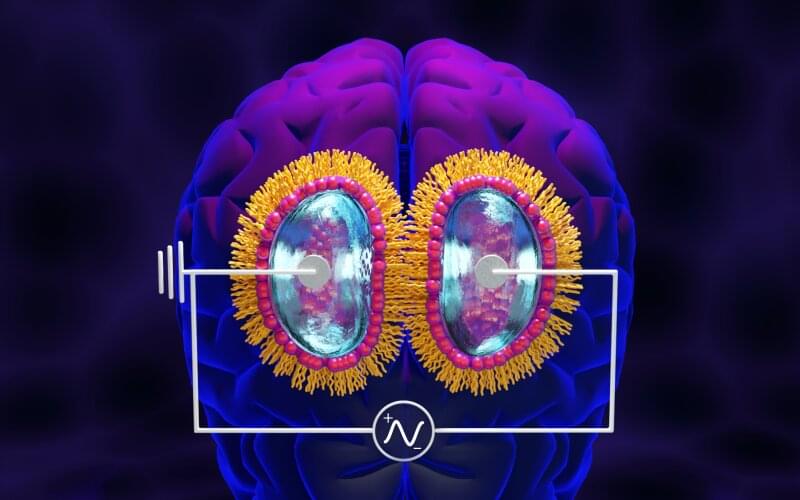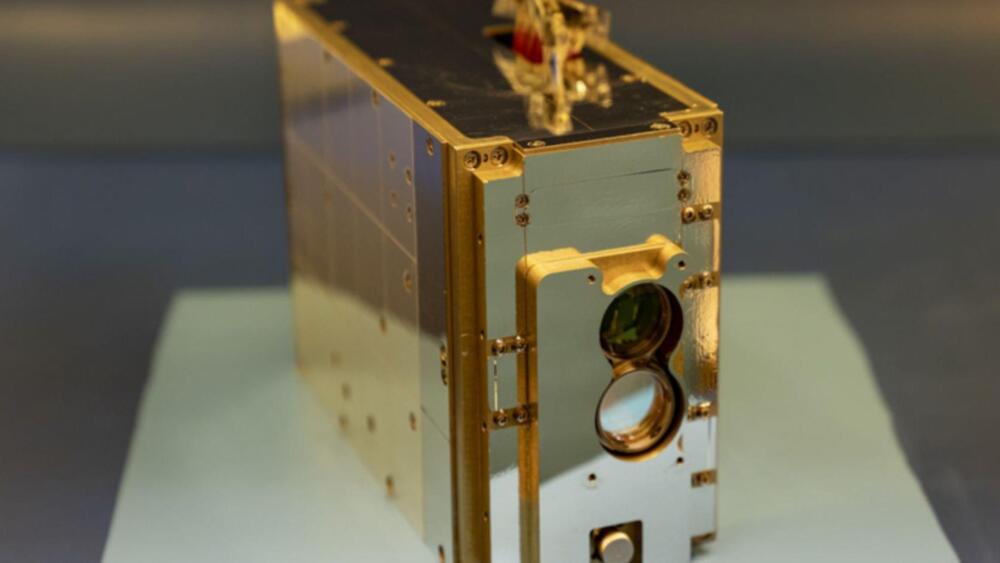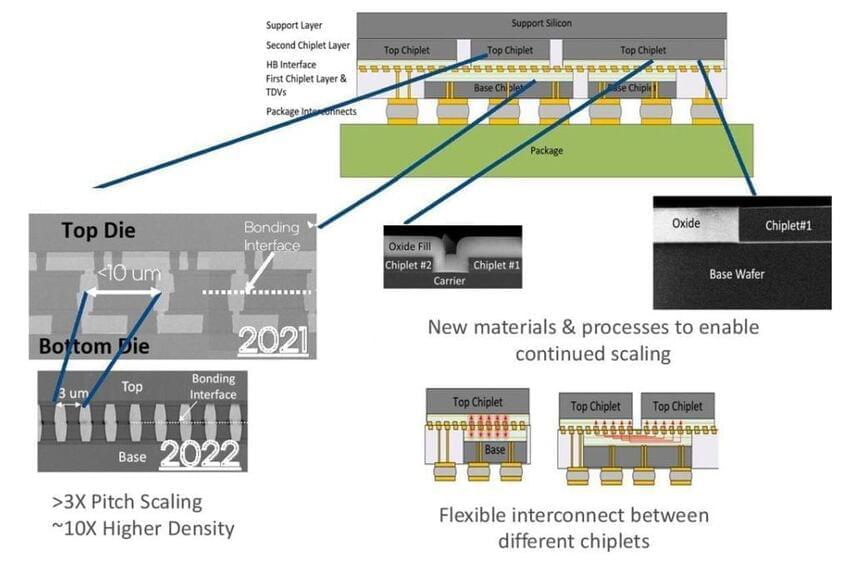Frankly I’m pretty stoked about getting my brain inside a computer and living forever.
Category: computing – Page 480

Biomembrane research findings could advance understanding of computing and human memory
While studying how bio-inspired materials might inform the design of next-generation computers, scientists at the Department of Energy’s Oak Ridge National Laboratory achieved a first-of-its-kind result that could have big implications for both edge computing and human health.
Results published in Proceedings of the National Academy of Sciences show that an artificial cell membrane is capable of long-term potentiation, or LTP, a hallmark of biological learning and memory. This is the first evidence that a cell membrane alone—without proteins or other biomolecules embedded within it—is capable of LTP that persists for many hours. It is also the first identified nanoscale structure in which memory can be encoded.
“When facilities were shut down as a result of COVID, this led us to pivot away from our usual membrane research,” said John Katsaras, a biophysicist in ORNL’s Neutron Sciences Directorate specializing in neutron scattering and the study of biological membranes at ORNL.
Megastructures 10: Matrioshka Brains
In Episode 10 we explore the Matrioshka Brain, a nested Layer type of Dyson Sphere designed to turn stars in to giant computers, and conclude our look at Dyson Spheres and other types of Stellar Engines.
Support the Channel on Patreon:
https://www.patreon.com/IsaacArthur.
Listen or Download the audio of this episode from Soundcloud:
https://soundcloud.com/isaac-arthur-148927746/ms10-matrioshka-brains.
Support the Channel on Patreon:
https://www.patreon.com/user?ty=h&u=3365828
Original Paper on Matrioshka Brains by RJ Bradbury:
https://www.gwern.net/docs/1999-bradbury-matrioshkabrains.pdf.
More art by Jakub Grygier:

U.S. Dept of Energy Breakthrough: Detecting Dark Matter With Quantum Computers
Dark matter makes up about 27% of the matter and energy budget in the universe, but scientists do not know much about it. They do know that it is cold, meaning that the particles that make up dark matter are slow-moving. It is also difficult to detect dark matter directly because it does not interact with light. However, scientists at the U.S. Department of Energy’s Fermi National Accelerator Laboratory (Fermilab) have discovered a way to use quantum computers to look for dark matter.
Aaron Chou, a senior scientist at Fermilab, works on detecting dark matter through quantum science. As part of DOE’s Office of High Energy Physics QuantISED program, he has developed a way to use qubits, the main component of quantum computing.
Performing computation using quantum-mechanical phenomena such as superposition and entanglement.

Chip lets scientists study biocement formation in real-time
Scientists from EPFL and the University of Lausanne have used a chip that was originally designed for environmental science to study the properties of biocement formation. This material has the potential to replace traditional cement binders in certain civil engineering applications.
The chip is the size of a credit card and its surface is engraved with a flow channel measuring one meter from end to end that is as thick as a human hair. Researchers can inject a solution into one end of the channel and, with the help of time-lapse microscopy, observe the solution’s behavior over several hours. Medical scientists have used similar chips for health care applications, such as to examine how arteries get clogged or how a drug spreads into the bloodstream, while environmental engineers have applied them to the study of biofilms and contaminants in drinking water.
Now, a team of civil engineers at EPFL’s Laboratory of Soil Mechanics (LMS), together with scientists from the Faculty of Geosciences and Environment at the University of Lausanne (UNIL), have repurposed the chip to understand complex transport-reaction phenomena involved in the formation of new kinds of biocement.
How Features of Our Consciousness Seem to Define Our Laws of Physics and Maths (Stephen Wolfram)
Our Wolfram Physics Project has provided a surprisingly successful picture of the underlying (deeply computational) structure of our physical universe. I’ll talk here about how our perception of that underlying structure is determined by what seem to be key features of our consciousness—and how this leads to detailed laws of physics as we experience them. Our Physics Project has led to the concept of the ruliad—the entangled limit of all possible computations—which seems to represent a common underlying structure from which both physics and mathematics emerge. I’ll talk about the comparison between physical and mathematical observers, and how their common features in consciousness lead to implications for general laws of “bulk mathematics”.

MIT engineers’ record-breaking information system is 1,000 times faster than traditional method
The future of laser communications looks bright and boundless.
In groundbreaking news, MIT announced on November 30 that engineers at the Lincoln Laboratory had broken the record for the fastest laser link from space with its TeraByte InfraRed Delivery (TBIRD) system.
The TBIRD payload, launched into orbit in May 2022, has sent down data at a speed of up to 100 gigabits per second through an optical communication link to a ground receiver in California. The new record is around 1,000 times faster than traditional methods. This means that sending information to and from space will see tremendous improvement with this new technology.

Intel Charts Course to Trillion-Transistor Chips: 2D Transistor Materials, 3D Packaging Research
Intel released nine research papers at IEDM 2022 that lay the groundwork for future chip designs as the company looks to deliver on its promise of developing processors with over a trillion transistors by 2030.
The research includes new 2D materials for transistors, new 3D packaging technology that narrows the performance and power gap between chiplet and single-die processors to a nearly-imperceptible range, transistors that ‘don’t forget’ when power is removed, and embedded memories that can be stacked directly on top of transistors and store more than one bit per cell, among other innovations.
An architecture that gives users full control of their smartphones
In recent years, many smartphone users have become concerned about the privacy of their data and the extent to which companies might have access to this data. As things stand today, the applications that users can run on their phone and what they can do with these applications is determined by a few big tech companies.
Researchers at ETH Zurich have recently set out on a quest to change this current trend, through the development of a new smartphone architecture called TEEtime. This architecture, introduced in a paper pre-published on arXiv, allows users to flexibly choose what resources on their smartphone they will dedicate to legacy operating systems, such as Android or iOS, and which they wish to keep for their own proprietary software and data.
“This work was inspired (in part) by our experiences in developing (Swiss) contact tracing applications, where we quickly noticed how limited we are as researchers/developers in accessing some basic services on ‘our’ phones,” Srdjan Capkun, one of the researchers who carried out the study, told TechXplore.
The Thymus As A Key Target For Aging Intervention — Dr. Greg Fahy — EARD 2022
This is a followup trial result to the first trial that reported 2.5 years of epigenetic age reversal This has interesting reports from the actual patients about how they feel and the changes it made to them. After the first trial I sent an email to see if I could do this but I have IBS which Fahy said would disqualify me.
Dr. Greg Fahy gives an update on the TRIIM-X clinical trial at EARD 2022.
The TRIIM-X clinical trial aims to understand how to create a personalized thymus regeneration regimen. By regenerating the thymus, the researchers hope to be able to prevent or reverse certain aspects of immune system aging.
FOLLOW US
▀▀▀▀▀▀▀▀▀▀▀▀▀▀▀▀▀▀▀▀▀▀▀▀▀▀
https://www.lifespan.io.
https://www.facebook.com/lifespanio.
https://www.instagram.com/lifespan.io/
▀▀▀▀▀▀▀▀▀▀▀▀▀▀▀▀▀▀▀▀▀▀▀▀▀▀